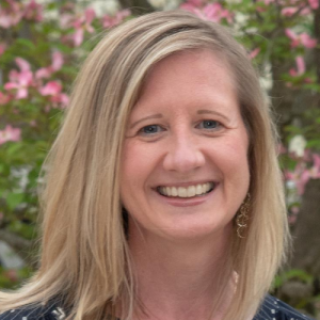Finding Hidden Data Treasure – 2018 Update
August 22, 2019
The State of Preschool 2018 yearbook makes it easy to find how many children in your state attend public pre-K. Or whether your state, or others, requires pay parity for pre-K teachers with K-3. And if someone with only a high school diploma is allowed to teach pre-K in your state.
But if you want to know how old a child must be to enter kindergarten, what “full-day pre-K” means in your state, or whether more children attend pre-K in public schools or community-based centers, the yearbook won’t tell you, but Appendix A will.
Think of the recently published Appendices A through D as one massive footnote to The State of Preschool. It’s a treasure trove of detailed data on publicly funded preschool programs in the US and Guam.
The 2018 yearbook includes data about 62 state-funded programs in 44 states plus the District of Columbia and Guam and measures state pre-K policies against a rigorous set of 10 Quality Standards Benchmarks. The appendices hold all the information state education agencies submit for an annual survey informing each benchmark determination. It includes answers to many of the yearbook’s other pre-K policy data points—from state spending per child to parity policies for the pre-K workforce.
Appendix B includes Head Start data; Appendix C provides census data, and Appendix D shares preschool special education enrollment data. But Appendix A is the motherlode.
Two hundred pages of program-by-program detail, Appendix A reveals valuable insight on specific aspects of every state-funded preschool program. Major topic areas include access, operating schedule, eligibility requirements, program standards, Early Learning & Development Standards (ELDS), curriculum, personnel, preschool workforce parity policies, resources, and accountability and assessment policies. Each topic area encompasses detailed information of specific policies. Don’t be surprised if you dive in looking for the answer to one question, only to discover you’re compelled to find the answers to many more.
You may ask questions such as:
Which state programs have the largest and smallest administrative staff to support pre-K? (p. 193)
Answer: Pennsylvania Ready to Learn Block Grant and Wisconsin Head Start State Supplement both report just 0.1 FTE, while Georgia’s Pre-K Program reports 68 FTE.
What percentage of teachers have more than and less than a BA degree? (p. 261, 273-274)
Answer: In some programs no teacher has less than a BA and many have an MA. In others, a substantial percentage of teachers have no more than a high school diploma. Twenty-four programs could not report this information (check out p. 273 and individual program footnotes for more detailed information).
Does my state require salary parity with K-3 for preschool lead teachers? (p. 276)
Answer: It may surprise you to see how few states require salary parity for preschool teachers with their K-3 counterparts.
Which states have conducted a formal evaluation of their pre-K program measuring both quality and effectiveness within the last five years? Where can I find them? (p. 304-305)
Answer: Twenty-four programs reported an evaluation was completed or is being planned or piloted, and 17 were able to provide a link to the report.
Do all states require that preschool curricula align with Early Learning and Development Standards (ELDS)? (p. 255)
Answer: Twelve programs do not require alignment between curricula and ELDS.
Are all districts in my state required to offer pre-K? (p. 194)
Answer: Not every state requires all districts to offer pre-K. In fact, only six of 62 programs have this requirement.
How many children enrolled in preschool in my state speak a language other than English at home? (p. 203-204)
Answer: The data, or lack there of, may surprise you. Fewer than half of all state programs can report preschool enrollment by home language.
The State of Preschool 2018 highlights both successes and shortcomings of state-funded preschool programs. But this yearbook is more than its executive summary and state profiles. Thanks to early childhood specialists in state agencies who make time to share their knowledge through NIEER’s annual yearbook survey, we have this invaluable one-stop public preschool data resource.
———————————————-
Katherine Hodges is a Research Project Coordinator at NIEER. She works on the State of Preschool yearbook team, helping to develop the yearbook survey, clean survey data, and disseminate research.
Karin Garver is an Early Childhood Education Policy Specialist at NIEER. She focuses on national policy trends related to state-funded preschool programs, with particular interest in data systems, systems integration, and preschool finance. Before joining NIEER, Karin was with the New Jersey Department of Education for nearly 16 years.
The Authors
Kate is an Early Childhood Education Policy Specialist at NIEER, where she primarily focuses on state and national policy analysis. Her current work includes collecting, analyzing, and disseminating data for the annual State of Preschool Yearbook report, providing technical assistance to New Jersey school districts and private providers applying for and implementing the state-funded preschool program, among other projects.
Karin Garver is an Early Childhood Education Policy Specialist at NIEER. Her research interests are in national and state early education policy trends, inclusive opportunities for preschool children with disabilities, data systems, systems integration, and public program finance.
About NIEER
The National Institute for Early Education Research (NIEER) at the Graduate School of Education, Rutgers University, New Brunswick, NJ, conducts and disseminates independent research and analysis to inform early childhood education policy.


